Things to know when you travel by train in Vietnam - Handspan Travel Indochina
2Things to know when you travel by train in Vietnam - Handspan Travel Indochina
Traveling by train is one of the most exciting experiences in Vietnam that you may not want to miss. Staying on the train, you will have a chance to enjoy the pace of life and the stunning scenery around the way. Let’s find things to know when you travel by train in Vietnam with Handspan Travel Indochina!
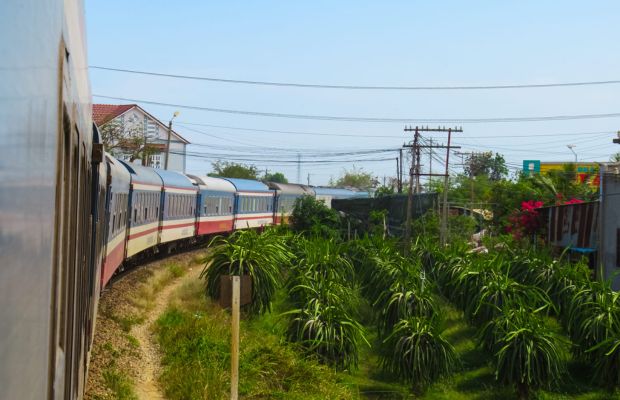
Traveling by train in Vietnam, picture cre: Dinh Ngoc Tuan My
This blog post will give you an insight into these pieces of information below.
Why should you travel by train in Vietnam?
Why should you travel by train in Vietnam? Here are the reasons.
Affordable
Train travel in Vietnam is often more affordable than other forms of transportation, especially for longer distances. You can save money while enjoying a unique and comfortable travel experience.
Safe
Compared to other means of transportation, it’s safer when you travel by train in Vietnam. Every train runs on fixed tracks and follows only one route to the final destination. Therefore, there will be less likely for sudden changes in direction in dangerous situations.
Convenient and comfortable
Vietnamese trains are equipped with comfortable seats or sleeper cabins, making it a comfortable way to travel. You can stretch your legs, sleep and relax during your journey. Besides, while traveling by bus for a long distance, you will have to get off the bus to go to the toilet, you won’t when you travel by train, as there is a toilet on each carriage.
Cultural experience
When you travel by train in Vietnam, you will have a chance to immerse yourself in the local culture and interact with other travelers and locals. It's a great way to learn about the customs and traditions of the Vietnamese people.
Stunning scenery along the way
When you choose to travel by train in Vietnam, you will have the chance to admire parts of the country that you may not see if you travel by plane or bus. Throughout your journey, you will be amazed by the spectacular natural scenery, from rice paddies to majestic mountain slopes, immense grasslands, golden sand dunes, or enchanting coastlines.
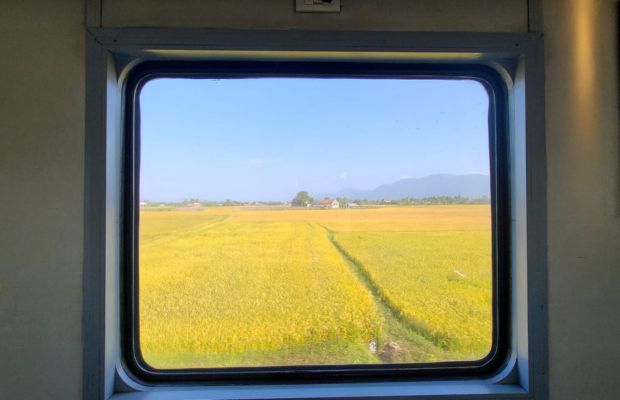
View from the train's window, cre: Tran Viet Duong
Overall, choosing to travel by train in Vietnam provides a unique and authentic way to explore the country. Let’s keep reading for more information!
How to buy a train ticket in Vietnam?
To buy a train ticket in Vietnam, you can come directly to the railway stations. You just need to go to the train station, tell the ticket sellers about your desired spot, and get the ticket from them. Then, just wait until the train comes and get on the train.

Traveling by train in Vietnam
However, for more convenience, it will be better if you book the ticket in advance. you can book online at the Vietnam Railway company’s homepage here: https://dsvn.vn/#/. You just need to fill in the departure and arrival stations, choose a one-way or round trip, your departure and return time, search, and choose your favorable seats or berths, then make online payment according to the instructions. Usually, you are given an e-ticket via email, so you will need to exchange it for a real train ticket at the ticket desk. Besides buying an online ticket at the Vietnam Railway company’s homepage, if you want to book the luxurious cabin’s berth, you can contact our Handspan team.
Types of seats on Vietnam train
When you travel by train in Vietnam, you can choose among the hard seat, soft seat, hard berth, and soft berth for your journey. Each type of seat has a different price. Let’s see how each type is to decide the seat for your trip.
The hard seat
The hard seat type is the cheapest choice, so you can consider it if you want to save costs for your trip. However, this type of seat is made from solid wood and fixed on the floor; therefore, it may cause fatigue if you are on a long journey.
The soft seat
Compared to the hard seat, the soft seat has a higher price but is more convenient. Soft seats are usually designed with swivel arms to help guests automatically adjust the back recline of the chair, up to 15 degrees of the reclining chair. However, it is not so comfortable if you sit on this type of seat for a long time.
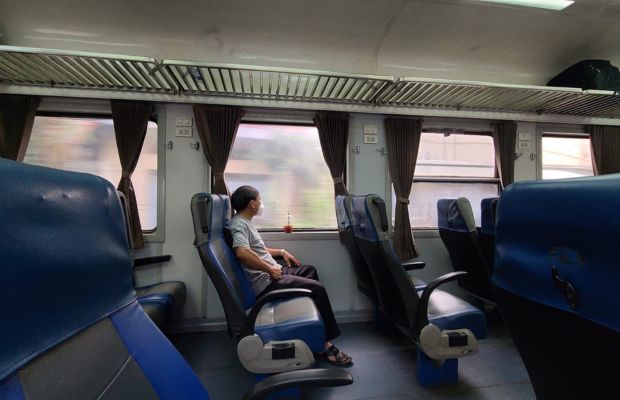
Soft seat on the train, cre: Tran Viet Duong
Train cabin with hard and soft berths
Undoubtedly, hard berths and soft berths are the most pleasant choices. You can choose the 6-berth cabin or 4-berth cabin to stay, especially if you stay on the train overnight. You will be provided with a thin mattress, soft pillow, light blanket, etc.
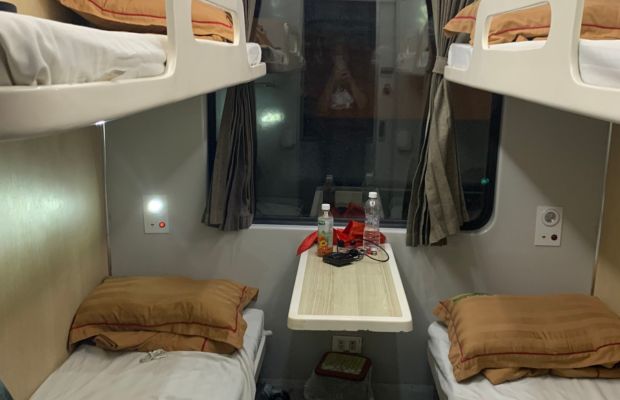
Soft berth on the train
Popular train routes in Vietnam
Vietnam has an extensive railway network that connects major cities and popular tourist destinations. Here are some of the most popular routes when you choose to travel by train in Vietnam.
Hanoi to Sapa
The route from Hanoi to Sapa is extremely worth taking. Instead of staying on a bus that runs through winding and meandering roads, the train will be safer. From Hanoi Railway Station, it takes you 8 hours to Lao Cai Railway Station, which is about 35 kilometers from Sapa town’s center. There are day and night trains to get to Lao Cai; however, Handspan recommends you take the night trains for a faster journey as you will have fewer stops than taking the day train. You can choose the SP1 departing at 09.35 p.m., or the SP3 train departing at 10.00 p.m. The price for a turn is from VND 150,000 per person depending on the type of seat.
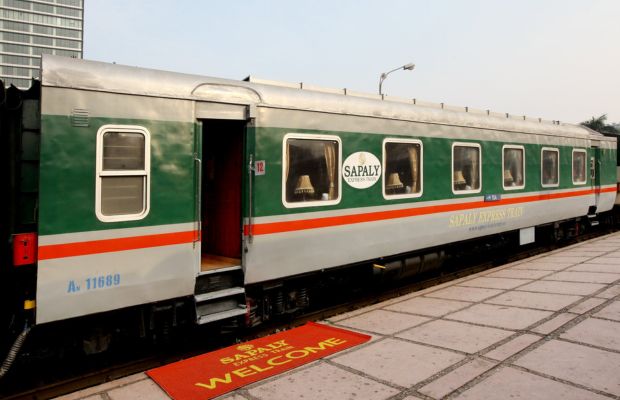
Sapaly Express Train
For more information about the train from Hanoi to Sapa, please refer to our blog post: A guide on traveling by train from Hanoi to Sapa - Handspan Travel Indochina.
Hanoi to Ho Chi Minh City and vice versa
This is the longest train route in Vietnam, spanning over 1,700 kilometers and taking around 35 hours. The North-South railway stretches from the North to the South of Vietnam, going through many provinces along Vietnam, such as Hanoi, Nam Dinh, Ninh Binh, Hue, Da Nang, Binh Dinh, Phu Yen, Khanh Hoa, Saigon, etc. Therefore, taking a train from Hanoi to Ho Chi Minh City or vice versa is a great way to appreciate the landscape of the whole country.
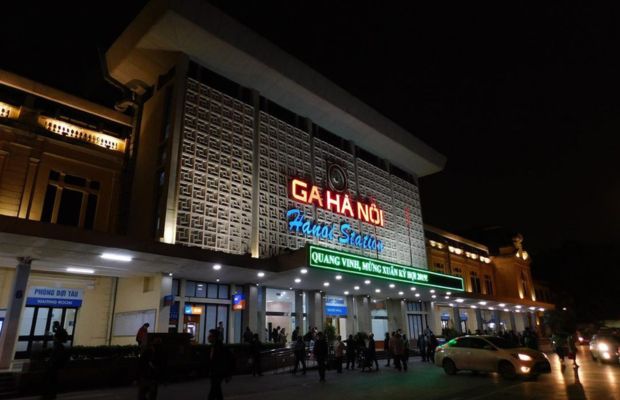
Hanoi Railway Station
From Hanoi Railway Station, you can choose SE7 (departs from 06.10 a.m.), SE11 (departs from 08.00 a.m.), SE5 (departs from 03.30 p.m.), SE3 (departs from 07.20 p.m.), and SE1 (departs from 10.00 p.m.). It costs you from VND 815,000 per person depending on the seat you choose. It’s highly recommended that you use the berth instead of the hard or soft seat for more convenience and comfort.
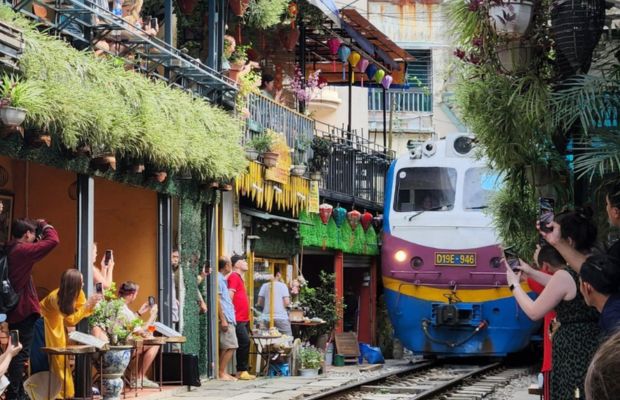
Hanoi train street
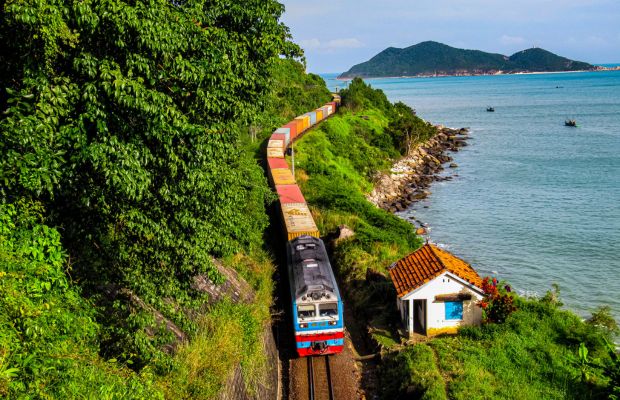
The train passes through the Ca Pass in Phu Yen, cre: Dinh Ngoc Tuan My
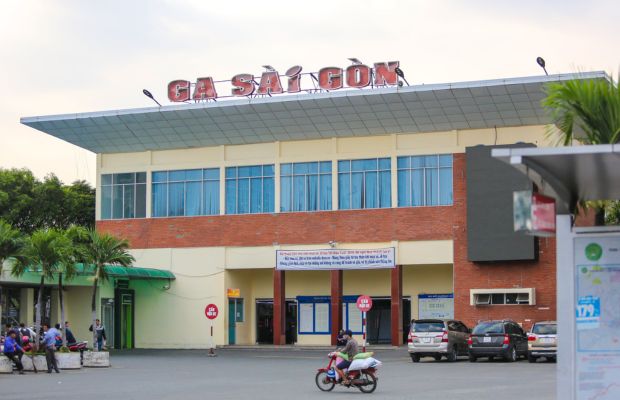
Saigon Railway Station
Hanoi to Hue
This is also one of the most amazing routes when you choose to travel by train in Vietnam. It takes around 14 hours to reach the Hue Railway Station from Hanoi Railway Station. The price for each person is from VND 486,000. As the train runs through the North-South railway system, you can also choose the SE7, SE11, SE5, SE3, and SE1 to transfer from Hanoi to Hue.

Dong Hoi, Quang Binh from the train's window
Hue to Da Nang and vice versa
The train route from Hue to Da Nang and vice versa is amazing, as it also runs through the Hai Van Pass, one of the most beautiful passes in Vietnam. Staying on the train for around three hours, you can admire beautiful views of the coast of central Vietnam. From Hue, you can choose the SE5, SE3, SE19, SE1, AND SE7, which departs in 05.35 a.m., 08.30 a.m., 09.25 a.m., 10.30 a.m., and 20.15 p.m. in turn. From Da Nang, there are five train turns, which are SE8 (departs from 00.45 a.m.), SE6 (departs from 10.08 a.m.), SE4 (departs from 12.43 p.m.), SE2 (departs from 01.54 p.m.), and SE20 (departs from 06.05 p.m.). The price for a seat is from VND 133,000.
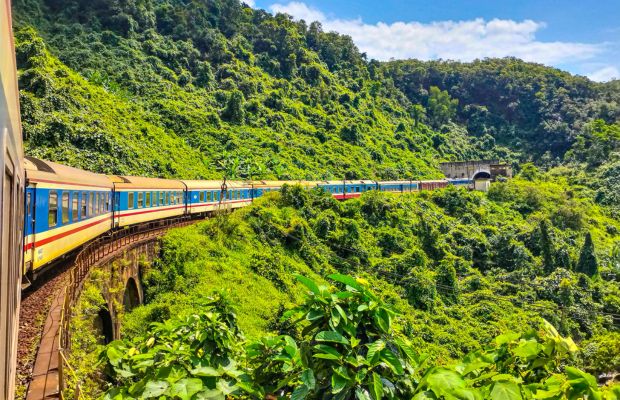
The train passes through the Hai Van Pass, cre: Nguyen Bao Trung
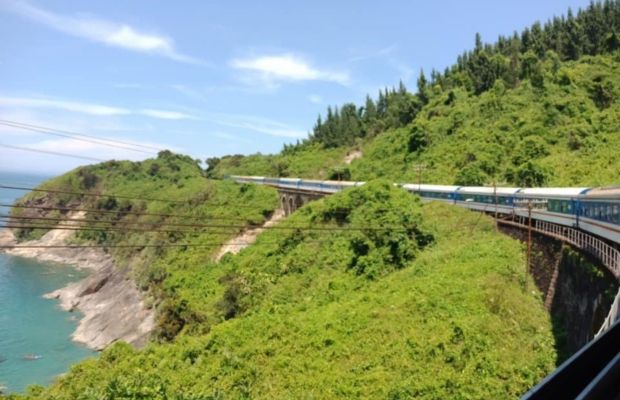
Hai Van Pass, cre: Nguyen Anh Tuan
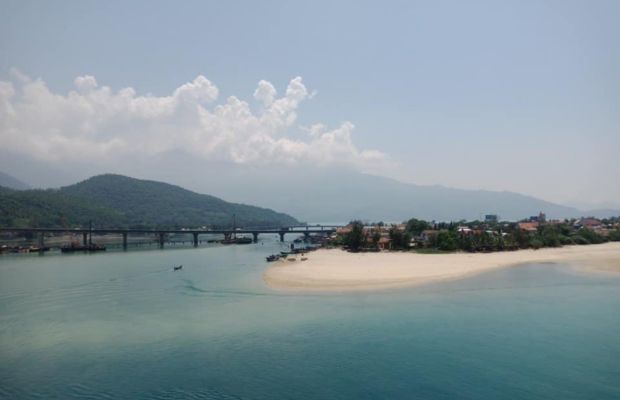
Chan May Beach in Hue, cre: Nguyen Anh Tuan
Da Nang to Quy Nhon
The 6-hour train route from Da Nang to Quy Nhon gives you a chance to adore from beautiful beaches to stretching rice fields in the central and south central coast areas of Vietnam. To reach Dieu Tri Railway station from Da Nang Railway station, you can choose the SE21, SE5, SE3, SE1, and SE7 which depart from 08.05 a.m., 08.47 a.m., 11.28 a.m., 01.43 p.m., and 11.12 p.m. respectively. It costs you from VND 257,000 for a seat. If you would like to enjoy luxurious services while seeing stunning scenery, you may want to stay in The Vietage Train with six spacious cabins attached to the SE21 train. The Vietage offers a private bar, restaurant, area for head and shoulder relaxation therapies, and toilet.

The train from Da Nang to Quy Nhon, cre: The Vietage
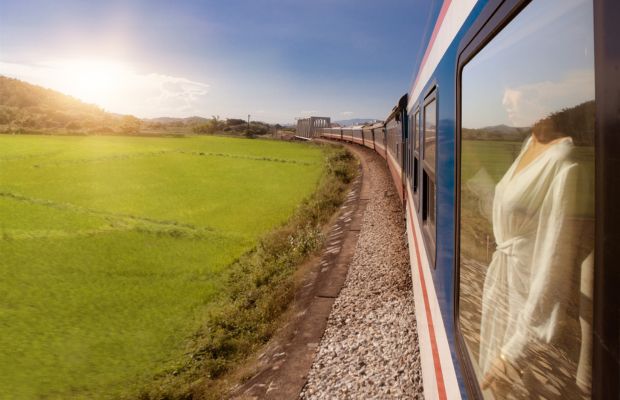
The train from Da Nang to Quy Nhon, cre: The Vietage
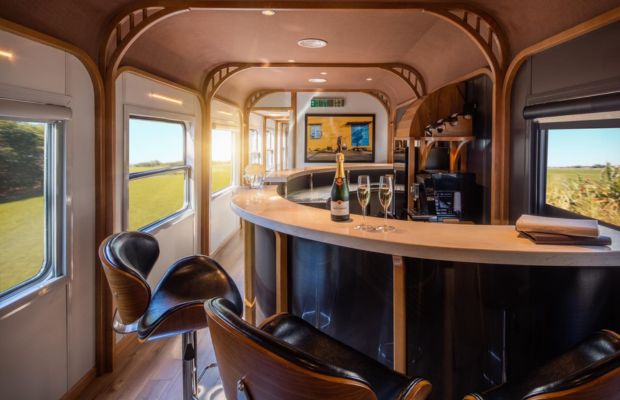
The Vietage's bar
Tips for traveling by train in Vietnam
Traveling by train is undoubtedly a unique and enjoyable memory in Vietnam. Here are some tips you may want to know when you travel by train in Vietnam for a complete experience.
Pack lightly
Train cabins in Vietnam tend to be small, so pack only what you need for your journey. Consider bringing a small backpack or daypack for your essentials.
Meals on board
They sell food and beverages onboard and you will mainly find instant noodles popular meals. Beverages are mostly cold soft drinks and local beers. However, you may want to bring your own snacks and water for a long journey.
Toilet on the train
There is one toilet at the end of each carriage, which could be either a squatting toilet or a sitting toilet. You need to bring along toilet paper as it's not provided. Please also note that the toilets are only open about 5 minutes after the trains leave the station. If you choose the luxurious train, you will find a more spacious and cleaner toilet.
In conclusion, you have just known about train travel in Vietnam. Hope that with these pieces of information, you will have fun when you travel by train in Vietnam. If you want to have more information, book a Vietnam tour package, or make your tour on request, please do not hesitate to contact our team. Here are some grand tours in Vietnam you may want to refer to.
__logo.png)
__hanoi-water-puppets.jpg)
__angkor-wat-blue-reflections.jpg)
__vientiane-buddha-park-monks.jpg)
__bagan-dhammayazika-dusk.jpg)





